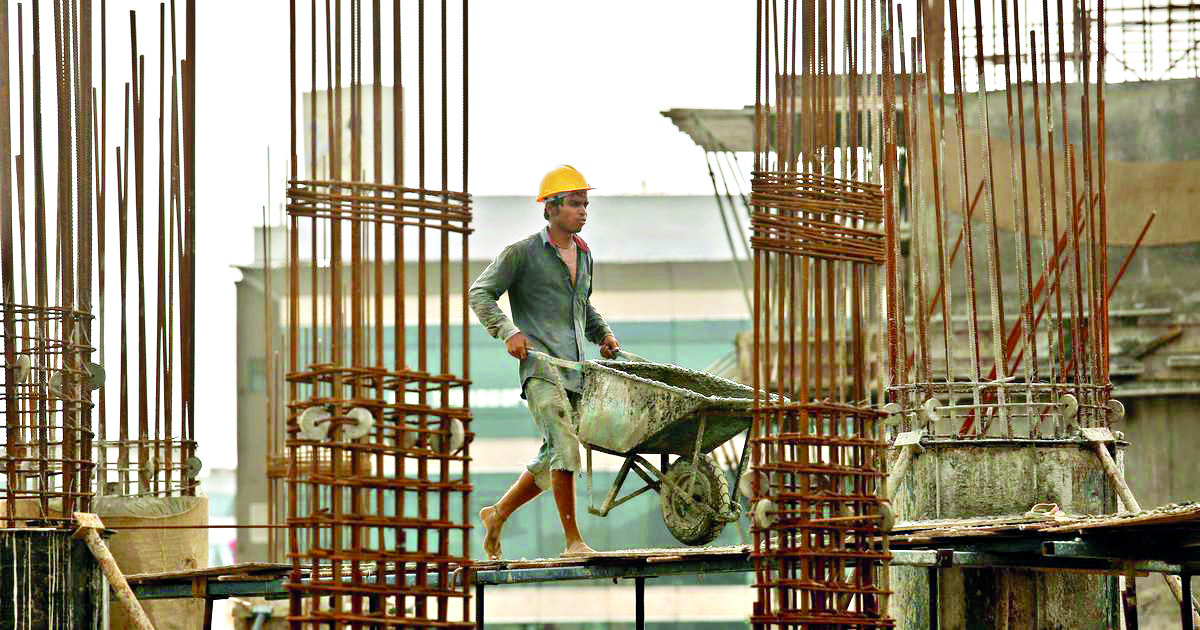World Bank projects Indian economy to grow at 7.5% in FY24

The Indian economy is projected to grow at 7.5 per cent in 2024, the World Bank has said, revising its earlier projections for the same period by 1.2 per cent.
Overall, growth in South Asia is expected to be strong at 6.0 per cent in 2024, driven mainly by robust growth in India and recoveries in Pakistan and Sri Lanka, the World Bank said in its latest South Asia Development Update on Tuesday.
According to the report, South Asia is expected to remain the fastest-growing region in the world for the next two years, with growth projected to be 6.1% in 2025.
“In India, which accounts for the bulk of the region’s economy, output growth is expected to reach 7.5% in FY23/24 before returning to 6.6% over the medium term, with activity in services and industry expected to remain robust,” the bank said in its report. In Bangladesh, output is expected to rise by 5.7% in FY24/25, with high inflation and restrictions on trade and foreign exchange constraining economic activity.
Following the contraction in FY22/23, Pakistan’s economy is expected to grow by 2.3% in FY24/25 as business confidence improves. In Sri Lanka, output growth is expected to strengthen to 2.5% in 2025, with modest recoveries in reserves, remittances, and tourism.
“South Asia’s growth prospects remain bright in the short run, but fragile fiscal positions and increasing climate shocks are dark clouds on the horizon,” said Martin Raiser, World Bank Vice President for South Asia. “To make growth more resilient, countries need to adopt policies to boost private investment and strengthen employment growth,” he said.
“South Asia is failing right now to fully capitalize on its demographic dividend. This is a missed opportunity,” said Franziska Ohnsorge, World Bank Chief Economist for South Asia.
If the region employed as large a share of the working-age population as other emerging markets and developing economies, its output could be 16% higher, Ohnsorge said.
In India, the World Bank said, economic activity surprised on the upside in 2023Q4, with growth of 8.4 per cent from a year ago. “The expansion was supported by rapid increases in investment and government consumption. More recent survey data point to continued strong performance,” it said.
In February, India’s composite purchasing managers index (PMI) stood at 60.6, well above the global average of 52.1 (a value above 50 indicates expansion). Growth in FY2023/24 is estimated to have exceeded earlier forecasts, it said.
According to the report, in India, inflation has remained within the Reserve Bank of India’s 2–6 per cent target range since a spike in mid-2023, and the policy rate has remained unchanged since February 2023. Food price inflation has been elevated, partly reflecting a weak harvest due to El Niño, it said.
Financial conditions in India have remained accommodative. Domestic credit issuance to the commercial sector (including public and private borrowers) grew by 14 per cent (year-on-year) in December 2023, the fastest pace since 2013. Financial soundness indicators continued to improve. The nonperforming-loan ratio fell to 3.2 per cent last year, well below its recent peak, in March 2018, of about 11 per cent.
Regulatory capital totalled 17 per cent of bank assets in the second quarter of 2023, surpassing both regulatory requirements and peer averages.



